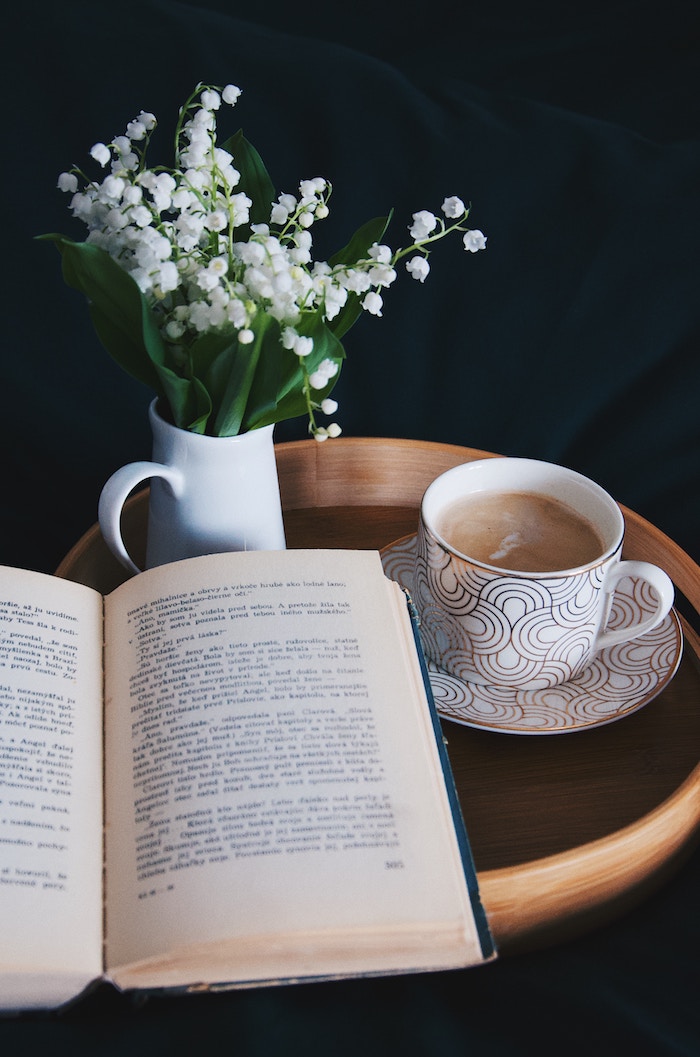My ADHD discovery
When I discovered I had adult ADHD, things started to make sense.
I could blame my ADHD for many things: the clutter, procrastination, constant distraction, unfinished tasks and unfulfilled goals, obnoxiously silly nature, fiery temper, impatience and monkey mind. The way I constantly asked my best friends what had just happened in the movie we were watching, or had to re-read pages in my book, because my mind had drifted off—again. I have an ADHD brain, which means I struggle with focus, organization, emotional regulation, and other executive function challenges.
After a period of grieving for not understanding how my challenges were connected sooner, for my low self-esteem my ADHD had helped to create, I threw myself into research about how to manage my symptoms and increase my productivity, and my life inevitably. This journey so far led me to the light—from viewing my ADHD as something that holds me back, to thinking of it as something that makes me unique and gives me strengths other people with “normal” brain don’t have—my spicy and dark sense of humor, my flavorful sassiness, and my quick and colorful thoughts and original resolutions.
While I do not pursue medication to treat my ADHD, I’m excited about using natural solutions. I collected some of the practices I use daily since I was diagnosed, to naturally work with my ADHD brain chemistry and get things done. I home it might be helpful for others, even if they do not (know that they) live with ADHD.

Natural remedies for improving productivity with ADHD
Know when you are at your best.
I noticed my mind is the sharpest and clearest early in the morning or very late at night—and no, I don’t need coffee for that. Knowing this, I plan my days accordingly (as much as I can because I can’t live according to task and to-do lists). I often start my day with the task that would require the most concentration, like writing my articles, doing taxes, writing important emails. I tend to forget about things throughout the day so I spend some hours at night to get the rest done, that’s when I have more energy again and I naturally remember of forgotten tasks.
Schedule breaks
This is something I did when I had a corporate office job and didn’t know about my ADHD just yet, but I noticed it worked for me and now I understand why. For every 50 minutes I spent with work, I used to take a 10 minute break. Often we had to take our breaks all at once at a pre-scheduled time, but even then if I didn’t have time to take a proper break, I made sure I got some minutes when I drank water, focused on a different kind of task (answering some emails or replying back on teams chat, etc), and had some stolen moments to open and look out the window.
Nature time
I know I keep parroting this in almost every article I write and probably the biggest cliché of the world, but nature heals. Walking in the lush color palette of a forest is perfect for relieving constantly-churning thoughts and restless limbs.
Quit caffeine
I love the taste of coffee but I always found that it makes me anxious and even more restless than I was before. Even a strong cup of Earl Grey would make me feel a bit off balance. I switched coffee to decaf on the days I really crave coffee or when I actually need the caffeine boost, I still go for something weaker. Normally I’d get myself a nice spiced chai, golden milk or my new favorites, superfood lattes.
Find your drishti
I was introduced to the term drishti when I was doing my yoga teacher training in India (speaking of which, if you have ADHD you should definitely start yoga and meditation). Drishti means a focal point, a focus of your gaze while doing the asana, the posture. Every posture requires a different drishti, once I mastered them, not only did my yoga practice evolve but my life in general—steadying the eyes on one un-moving spot was key to reigning my whirling mind.
Turn off notifications
Since I already struggle with attention deficit, my constantly dinging and beeping smartphone was siphoning away too much of the little attention I had. Notifications used to be such a distraction that I decided to mute my phone while at work, later I turned off notifications for some apps for the whole day, by now I just enjoy my phone being on silent 24/7. Most of the notifications aren’t important and/or is spam, I can’t afford be even more distracted. If something important happens, I will receive a call and I will notice that, so I’m not worried that I will miss out on something.
Re-fuel with protein
My energy tends to sink in the early afternoon and it gets harder to concentrate.What you eat definitely matters and I noticed when I have my low energy periods, high protein food helps me to get back on top of things. In the end, I think our body is like a machine. Like your car, if you use the wrong type of fuel, it will get damaged, so why do we wonder if we get sick and feel like sh*t when we feed or bodies with low-nutrient, processed, fatty and sugary food? Additionally, research has shown that a blast of protein can kick-start the neurotransmitters that promote alertness.
Don’t forget to move
As I mentioned before, yoga does wonders with my ADHD monkey brain but walking or any light exercise is perfect to release endorphins, get my heart-rate up and regain focus. The worst internal space for an individual with ADHD to inhabit is one where your body is lazy or under-worked and your head is spinning. And since we tend to get bored of things easily, spice things up and have many options to chose from just in case. I love to do yoga daily, but I practice different styles.
Sometimes I do active ashtanga every morning, other times I just feel like doing yin style. I like to do Pilates to stay in shape but it can get monotone, so I spice it up with following some belly dance workouts on YouTube or go for a brisk walk, or even hike. When I’m super stressed, I love to run or go to boxing, kickboxing, and taekwondo classes. Don’t let the routine kill the joy of exercise for you.
Discover your unique brain and how it works
There’s no two ADHD brain that would work the same, we are all a bit different. Personally, I do the tasks when I have energy and focus (see point one) and when I get inspired. What do I mean by that? I have to explain a bit more of how my ADHD brain works.
Let’s say I want to do my workout, so I take my tablet in the living room with my yoga mat, but suddenly I remember I forgot to brush my teeth, so I head to the bathroom to brush my teeth (otherwise I forget), then I see the toilet roll is empty, I change it while brushing my teeth so I won’t forget, then I start to do squats, because I know myself and I know I’ll forget about my workout, so at least I get something done and don’t just stand there looking at my reflection brushing her teeth. On my way back I get some water from the kitchen, and remember to write an email.
So that’s why I do weird stuff like squats while brushing my teeth, because I figured how my brain works. And yes, I tried to write to-do lists (give it a try, it might work for you) and I keep forgetting about them. I had to-do list reminders and post it notes all over the house, but I still kept forgetting my to-dos and even the reminders and I easily forget what I was going to do while I’m heading to do it…. an evil cycle, innit? That is why, knowing how my brain works helped me to get ahead of it, and doing things immediately while they are still in my mind helped me to get more things done.It is all about finding what works for you.
The Takeaway
To finish it off, women are easily under-diagnosed with ADHD when they function well within society because the stigma that this is a problem boy’s problem follows us even into adulthood. Children and teenagers too suffer when we don’t talk about the real-life condition—which occurs in men and women, young and old. Living in the world as an adult with ADHD can surely be a challenge—but it doesn’t have to be a disadvantage.
Get more like this—Sign up for our daily inspirational newsletter for exclusive content!
__
Photo: Surface via Unsplash




